




This past Friday, students came together for the 10th annual Patricia A. Whitely Women’s Leadership Symposium to celebrate and encourage women to live out their purpose through empowerment, wellness and leadership.
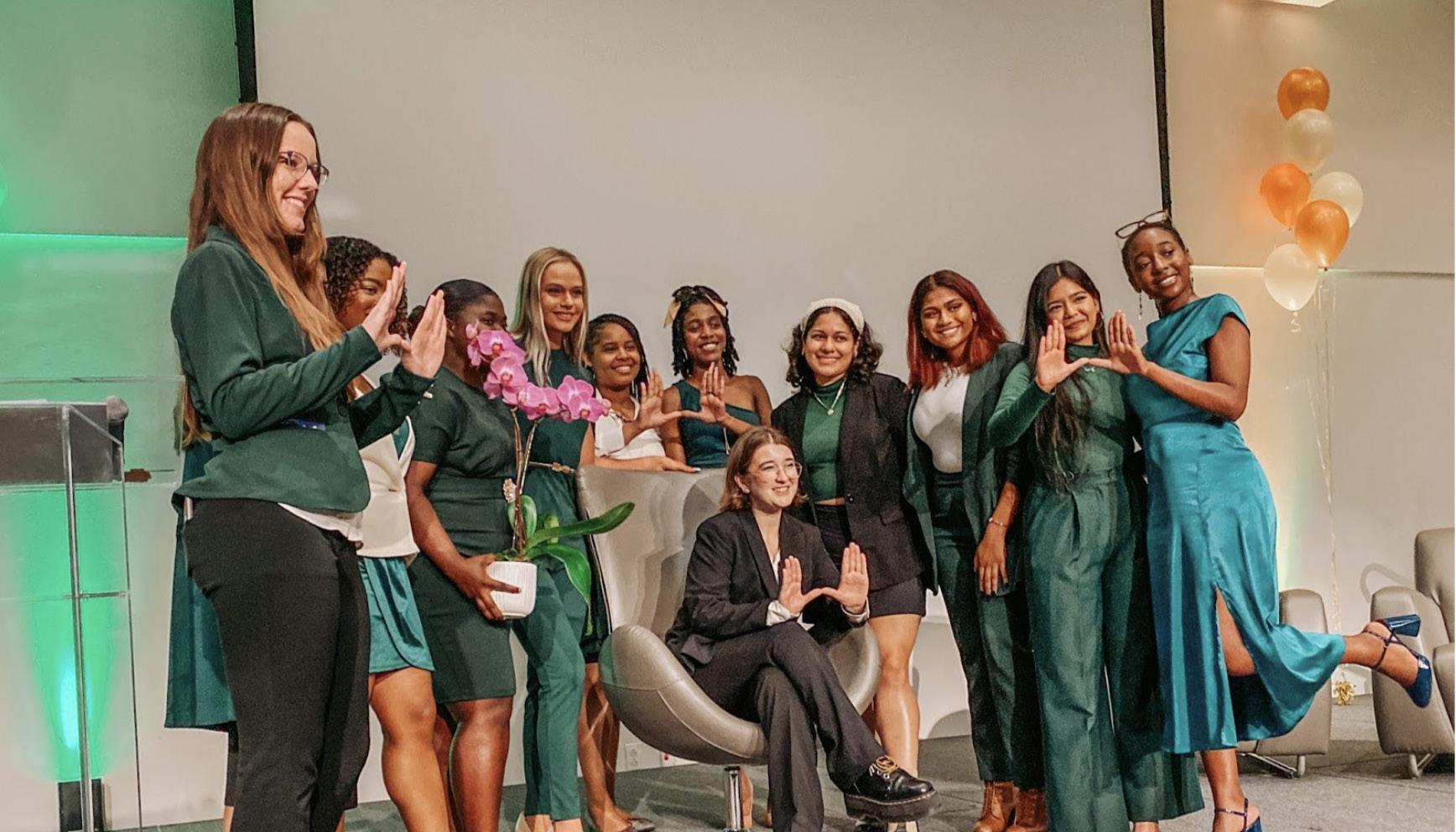
The symposium, which was organized by WWLS Committee Members and held by the Butler Center for Service and Leadership, brought together over 50 students to attend workshops and hold discussions on topics related to career development.
This year’s theme, Era of Empowerment, brought to the stage keynote speaker Latesha Byrd, a Certified Career Coach and talent developer who works with individuals to help them reach their fullest potential.
“With our theme Era of Empowerment, we aim to inspire participants to analyze the past or the present and build towards the future,” Byrd said.
At the symposium, Byrd shared her career journey from working as a woman in the accounting industry to becoming the CEO of Perfeqta, an Talent Development Agency that works with organizations to foster an inclusive workplace and maximize employee development and engagement.

“What we do at Perfeqta is helping our client partners really transform their culture so that people that look like me, people that look like us, people that look like everyone in this room can show up and feel motivated,” Byrd said. “We do not have a lack of motivation. We don’t have a lack of talent. But what we do have sometimes is a lack of resources, support, and mentorship.”
Byrd also spoke about the importance of incorporating focus groups into the workplace, which are designed to empower historically un-
derrepresented employees through better understanding their needs in terms of leadership development and management support.
Following Byrd’s keynote address, participants had the opportunity to network with one another and talk about the importance of peer support throughout the career development process.
The symposium also gave students the opportunity to participate in keynote conversation workshops led by Byrd and other distinguished speakers.
The first workshop, “How to Find and Keep A Great Mentor,” was hosted by Dr. Susan Amat, the Director for Entrepreneurial Initiatives at the University of Miami Hebert School of Business.
During the workshop, Amat talked with students about the characteristics of a good mentor and the key pillars of maintaining a good relationship with your mentor. The session focused on the importance of setting expectations with your mentor to foster a productive and empowering relationship.
The second workshop, Converting Your Passion to Purpose, was hosted by Dr. Marni Lennon, the Assistant Dean for Public Interest and a Lecturer of Law at the University of Miami.
Lennon held a highly interactive workshop that focused on the power of incorporating unique attributes and interests into purpose, designing a career path that will lead to lifelong fulfillment and success.
Sydney Stropes, a senior double majoring in Nursing and Religion and Healthcare, attended Lennon’s workshop at the symposium.
“She told us everything that you’re traditionally not taught. She told us it’s okay to not like the classes that you’re in, but to like the end goal of what your classes are going to bring about, and to make
sure that throughout the time that you are finding your passions, you are finding your fuel to get you to the end game,” Stropes said. Lennon encouraged students to reach out and meet with her oneon-one to discuss future career paths and opportunities for career enhancement.
The third and final workshop, Defining and Refining your Personal Brand, was hosted by Byrd herself and focused on the importance of sticking to your values in the corporate setting and developing a personal image centered around these values.
The symposium concluded with a dinner where WWLS Committee members raffled off both quarterly and year-long Career Coaching packages to two participants of the symposium.
Students can look forward to next year’s symposium, which will be held towards the end of Women’s History Month.
2 deadly shootings with no clear motives led to hundreds of arrests and dozens of guns confiscated during spring break in Miami Beach. Many have never felt safe in South Beach and this year was no different.
“I don’t feel safe in Miami Beach,” Isabella Lozano, a third-year student at UM studying sports administration and creative advertising from Miami, said. “I never have, I don’t go by my own choice.”
For the third year in a row, Miami beach officials issued a curfew in response to outbreaks of violence and excessively unruly spring break crowds that police had difficulty controlling.
“It’s frustrating and sad to see people come from all around the country and treat our beaches like
they’re a free-for-all,” sophomore political science and international studies major Emily Danzinger said. “There’s no decorum, no decency, just absolute chaos for us as a community to clean-up when spring break ends.”
The city said in a news release the curfew would be from 11:59 p.m. Sunday, March 19, until 6 a.m. Monday, March 20, with an additional curfew proposed for Thursday through Monday, March 27, that was not put in place. The curfew mainly affected South Beach, a popular party location for spring breakers.
“During spring break, I don’t feel like most places in Miami Beach are safe especially because of how quickly things can escalate into violence,” senior criminology and sociology major Paul Douillon said. “Within seconds bullets can start
flying and a life can be lost, so I don’t plan on spending any time out there over the next few weeks.”
Miami Beach thought they were well prepared for the large crowds expected to flood the popular streets of South Beach. Along Ocean Drive and Washington Avenue, police could be found on every corner.
“I was there during the day for a friend’s birthday and it was very crowded,” Lozano said. “Something happened on the beach, I didn’t see exactly what it was, but everyone started running away. It was straight out of a movie.”
The latest shooting that killed one person and injured another, took place around 3:30 a.m. Sunday on Ocean Drive in South Beach, according to Miami Beach police.
Police said the suspect, later identified as Dontavious Polk, “without any provocation,” shot the victim
multiple times. The victim died after being rushed to the Ryder Trauma Center at Jackson Memorial Hospital. A second person was hurt, but treated at the scene and released, police said on Twitter.
According to the arrest report, Polk fled the scene on foot and dropped a gun while being chased by a police officer. He was arrested after officers tackled him a few blocks away.
In the Friday night shooting, one male victim was killed and another seriously injured, causing crowds to scramble in fear into the streets as gunshots rang out. Police detained one person at the scene and found four firearms, but no additional details have been made available.
Under the curfew, people must leave businesses before midnight, but hotels can operate later only in service to their guests. The city release allows restaurants to stay open
only for delivery. The curfew does not apply to residents, people going to and from work, emergency services and hotel guests. Some roads were closed off and arriving hotel guests were required to show proof of their reservations.
The department reported that, as of Sunday night, 332 arrests were made and 71 guns had been confiscated. The motives for both shootings remain unclear.
The chaotic events of the weekend mirrored spring break last year. Exactly one year ago, police confiscated 70 guns and reported a similar number of arrests.
“Despite the shootings though, I do believe that the city leadership of Miami Beach along with the police department are taking the safety of their residents and tourists very seriously and will do their best to keep everyone safe,” Douillon said.
Following multiple fatal shootings in Miami Beach, students at the University of Miami with tickets to Ultra, one of the world’s largest electronic music festivals, plan to avoid the South Beach area during Miami Music Week (MMW).

Most students will not be attending Miami Music Week (MMW) events as the end of the semester approaches and workloads have increased.
“I barely even have time for Ultra.” Martin Chang, a second-year studying finance, said. “It’s more than enough music and dancing for the month, much less week.”
Two separate shootings on March 17 and 19, that left two people dead and large unruly crowds, prompted Miami Beach officials to implement a curfew for South Beach starting 11:59 p.m. Sunday, March 19. Sunday’s restriction was the third year in a row that city officials implemented a curfew during
spring break.
Some students attribute the spring break violence to the outof-state spring breakers, and are familiar with a relatively safe Miami Beach. In a similar fashion, the music festival is expected to attract many from outside the area.
“While I personally will not be going to any MMW events on the beach, I would advise those that are to be careful.” Kyle Araujo, a sophomore studying Exercise Physiology, said. “Miami Beach is still a somewhat safe place to go to during MMW, but I’m just going to avoid it.”
Music festival safety continues to be a concern for all rave-goers and concert fanatics. Those in attendance are aware of common safety practices such as traveling in groups and hydrating throughout the day.
“I attended Ultra last year and quickly learned that a large percentage of rave-goers are hyper aware of their surroundings and
make sure that everyone around them is having a good time.”
Chang said. “If someone looks unwell, sick, or in need of help, others in the crowd will not hesitate to do what is needed to help them.”
Even though the festival has a policy restricting the use of any illegal or illicit drugs, repeated cases of overdose and alcohol poisoning creates grounds for concern.
“While Ultra has grown to become one of Miami’s signature music events, we have experienced grave tragedies as a result of highrisk drinking and substance abuse, including the loss of a University of Miami senior student who died at the 2016 festival.” Dr Patricia Whitely, the Senior Vice President for Student Affairs at UM, said in an email sent out to all students.
A list of common safety practices and resources that attendees should be aware of such as the SaferWatch App that reports emergencies directly to first responders, were also included in the email.
Most students going to Ultra have attended the festival before and are aware of the risks. Students like Chang and Araujo plan on taking measures to ensure that themselves and the people around them have an enjoyable and safe experience.
“I make sure that my friends and I are properly hydrated and we
make it a point every few hours to eat and sit down to give our legs a break.” Chang said. “A camelpack is essential and the rehydration stations are awesome. Wearing shorts with zippers and keeping valuables to an absolute minimum is a must.”
On the evening of March 14, the University of Miami announced in an email that Brooke Roth, an elementary education major from Lido Beach, NY, had passed away. Roth passed away on the morning of Sunday, March 12 from a pre-existing medical condition.
“That Friday before she passed, Brooke texted me telling me she wasn’t feeling well and that she wanted to go to the hospital just to be safe,” said Ella Rivers, a close friend and suitemate of Roth’s, at a gathering for Roth held in Mahoney Residential College (MRC) on March 19.
Roth, 20-years-old, lived on the 6 floor of MRC and was close with those on her floor.
“The University of Miami, and especially Mahoney floor 6, will not be the same without her,” Rivers said in her speech on March 19.
During the vigil, friends and loved ones shared the ways that Roth had made a positive impact in their life.
“Brooke was the first friend I made after coming to the University of Miami,” said Leila Israel, a freshman and fellow elementary education major of Roth’s. “I met her in an orientation program where I didn’t know anyone, but I couldn’t have felt more welcomed and
comfortable as soon as I found Brooke.”
During her life, Roth was passionate about helping others. She was involved with the UM chapter of Camp Kesem, an organization that supports children affected by a parent’s cancer, and planned to be an elementary school teacher.
“She really would have been the best elementary school teacher one day,” Rivers said. Those who knew Roth had overwhelmingly positive thoughts about her and her infectious energy.
“If radiance was a person, it would be Brooke. I am so lucky to have been friends with someone so full of love,” Israel said.
Others spoke about the perseverance and joy that Roth exemplified throughout her struggles with her health. Though Roth faced medical obstacles throughout her life, she remained optimistic and lived her life to the fullest.
“Instead of letting what happened control her, Brooke took her life into her own hands and found a way to turn the salt into sugar,” Rivers said in her speech. Roth also motivated those around her to embrace life the same way she did.
“I am going to speak for everyone when I say that every day, Brooke inspired us to be stronger than we think we are, appreciate the little things in life and
most importantly practice kindness,” Rivers said.
Rivers encourages the UM community to honor Roth by living life as she did.
“While we cannot reverse this tragedy and bring her back, we can continue to live our lives in the spirit of her beautiful soul,” Rivers said.
Roth’s obituary can be found at https://www.dignitymemorial.com/obituaries/hewlett-ny/ brooke-roth-11200807 for those wishing to light a candle for Roth or share a memory. Students needing assistance can get in contact with the Counseling Center at Suite 305 of the Student Services Building or by calling (305) 284-5511.
The Biden administration’s new student debt forgiveness plan brought ease to many individuals with high debts, but after skepticism in the Supreme Court, it has left some students wondering what’s next.

In August 2022, President Biden announced his $400 billion Student Loan Relief Plan. The three-part plan promises to relieve student debt for low to middle income borrowers. Biden’s plan provides up to $20,000 in debt cancellation for Pell grant recipients and up to $10,000 for non-Pell grant recipients. This applies to borrowers whose individual income is less than $125,000 or $250,000 for married couples, according to a statement from the White House in 2022.
The plan also caps monthly payments for undergraduate students at 5% of the individual’s income. This lowers the average annual loan payment by more than $1,000.
According to the Biden Administration, the federal student loan debt is more than $1.6 trillion, and this program provides relief for up to 43
million of those borrowers.
However, Biden’s plan is under fire in the Supreme Court.
Six Republican-led states, including Arkansas, Iowa, Kansas, Missouri, Nebraska and South Carolina, sued the Biden administration on claims that the program harms their financial institutions and oversteps its executive powers.
Two students also filed a lawsuit. Myra Brow is ineligible for debt relief because her loans come from a private lender and do not qualify for forgiveness. The other student, Alexander Taylor is only eligible for $10,000 instead of the full $20,000 because he did not receive a Pell grant. They are questioning the process of how the program was enacted.
The Student Loan Relief Plan was formed through the HEROES Act of 2003. This act ultimately allows the Department of Education to revise criteria for student loan payments during a national emergency.
President Biden has claimed COVID-19 as the national emergency that allows him to create this plan.
According to University of Miami political science assistant pro-
fessor Matthew Nelsen, there are two main arguments: “Is the Biden administration misinterpreting the HEROES act?” and “Do the states have proper standing to bring the case to court?”
If the plan gets struck down, borrowers will no longer receive the $10,000 or $20,000 relief and since Biden has announced he is ending the COVID-19 emergency declarations, the program is unlikely to be renewed.
Sophomore Sofia Black is a psychology major on the pre-physician assistant (PA) track. She says she already has student loan debt and attending PA school would only worsen it.
“I don’t really understand why anyone would oppose this, I’m sure they all had student loans at some point,” Black said.
“A monthly student loan payment for many individuals, myself included, is equivalent to a mortgage and that is something that is going to contribute to a generational wealth gap,” Nelsen said.
“Honestly, I’m scared having student loans is going to set me back financially after graduation,” Black
said.
As of now, 16 million borrowers have had their debt relief approved and 26 million have applied, according to the White House. However, this litigation has paused student debt payments until at least 60 days after June 30.
“There is a 63 Republican majority of the court, so they might not be naturally disposed to support the Biden administration’s plan,” said political science professor and director of the George P. Hanley De-
mocracy Center Gregory Koger.
Koger says it’s unclear if the debt relief will be applied to future graduates or if future presidents will even follow Biden’s lead.
Katie Pavlik, a sophomore ecosystem science and policy major is eligible for the program. She says she hopes that the court upholds Biden’s program.
“This program is really important to me, seeing it questioned really rubs me the wrong way,” Pavlik said.
A cinema surrounded by classrooms invites students to watch the best movies ever, for free. This spring semester, Sight and Sounds’ “The Greatest Films of All Time” are showing at the Cosford Cinema. The list, produced by the British Film Institute magazine, is created via a poll of the international film industry once every ten years. Students may watch the top 10 films from the list at Cosford Cinema for free. The films have been playing on Sundays at 1 p.m., starting on Jan. 29 with “Jeanne Dielman, 23, Quai du Commerce, 1080 Bruxelles” (1975), Sight and Sound’s number one ranked movie, and continuing through April 16.
“Especially now, post-pandemic, movie theater attendance is down across the board,” said Rene Rodriguez, manager of the Cosford Cinema and an adjunct professor of film at the University of Miami. “If you look at the
Oscar nominations like Tar, The Banshees of Inisherin, The Fablemans, all those movies tanked, even though they are great movies and so audience movie-going habits have changed.”
To encourage students and the community to return to the physical movie theater, Rodriguez started several series of film curation, bringing various films to the big screen on campus.
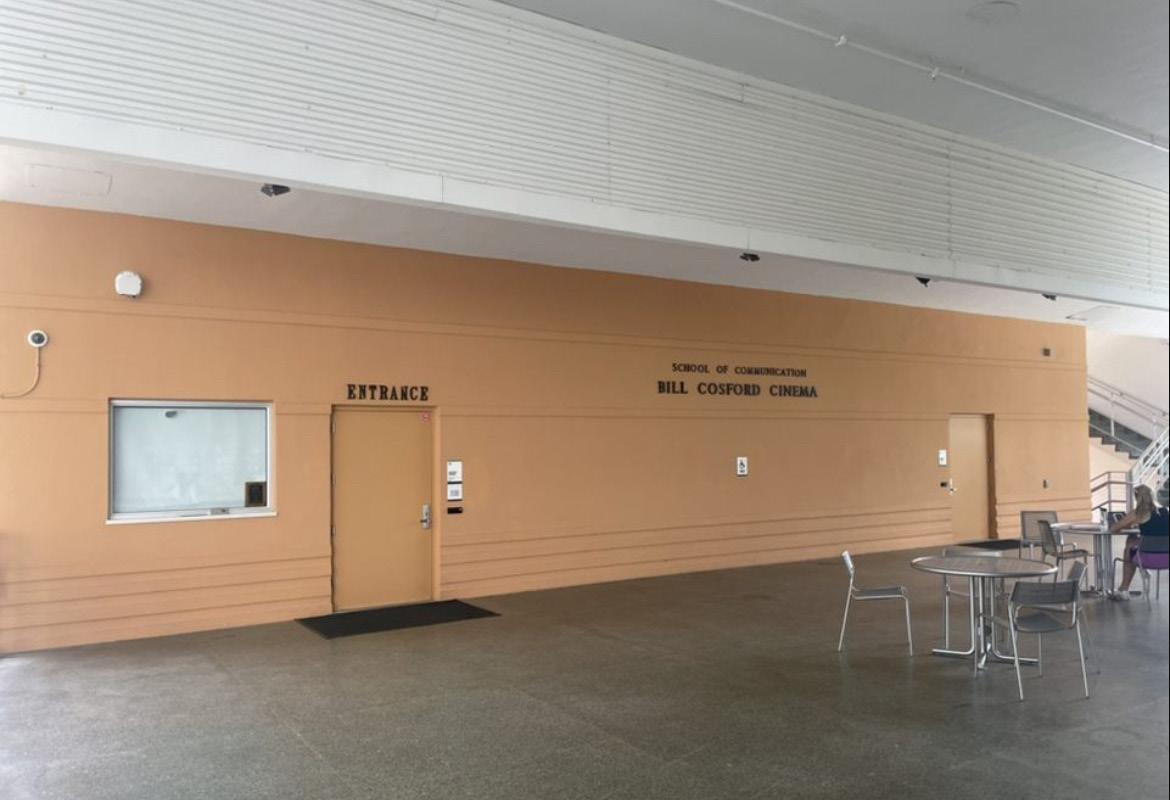
The films show in ranking order. A moderated panel discussion followed the first showing.
“We want to foster that and have that be kind of typical of the screenings that we have here. Just because it’s nice to be able to share ideas with the fellow film lovers,” said Katlyn Aviles, a PhD student in film studies.
Other films to be shown include “Vertigo” (1958), “Citizen Kane” (1941), “Tokyo Story” (1953), “In the Mood for Love (2000), “2001: A Space Odyssey” (1968), “Beau Travail” (1999), “Mulholland Drive” (2000), “Man with a Movie Camera” (1929) and “Singin’ in
the Rain” (1951). Major changes have happened to the list since polling ten years before.
“Before last year, a film by a woman had never made it to the top ten,” said Vivica Dunlap, a sophomore studying motion pictures.
The past several years have seen two films directed by women join the top ten and Jeanne Dielman, directed by Claire Denis, take the number one place.
The Cosford Cinema is located on the second floor of the Dooley Memorial Building. Not only is it the on-campus art-house cinema since 1947, but it also serves as a venue for film classes as well.
Other series at Cosford, both of which are monthly, are “Watching Movies With” and “Global Frontiers,” which bring prominent community members and professors to watch a film and discuss it with the audience. In addition to different programming series offered, the cinema hosts the Hurricane Productions’ Cinematic Arts
Commission movies as well.
“The long-term goal of eventually going back to what it used to be, where on weekends, we’re showing art-house movies, foreign films that aren’t being shown anywhere, keeping the students and the community in mind, because our audience is for students first but also it would be great to
get the community to come out,” Rodriguez said.
Tickets and more details are available at cosfordcinema.com, with free admission for students who use UMSTUDENT at checkout. Community members may also come with tickets for $5 per screening or purchase a series pass.
Florida’s universities hold some of the highest rankings in the country, leaving enrollment at these schools in high demand for upcoming college students. However, the recently proposed Florida House Bill 999 challenges the future integrity of these institutions’ high standings and questions the direction that Gov. DeSantis is moving in – not only the political climate of Florida but also its education system.
H.B. 999 bans Florida state colleges and universities from using funds to promote any program or activity that embraces diversity and equity among its students.
The bill states, “provide direc -
tion to each constituent university to remove from its programs any major or minor that is based on… methodology associated with Critical Theory, including, but not limited to, Critical Race Theory, Critical Race Studies, Critical Ethnic Studies, Radical Feminist Theory, Radical Gender Theory, Queer Theory, Critical Social Justice, or Intersectionality…”
Many of the organizations that have the potential to be removed from campuses include National Panhellenic Council (NPHC) organizations, Latinx organizations, Jewish Studies programs, Feminist Theory programs, Gender Studies programs, and centers and programs for Black students, Latinx students, Asian and AAPI students and LG -
BTQ+ students.
“This is not only about Florida,” the American Historical Association told CBS. “It is about the heart and soul of public higher education in the United States and about the role of history, historians, and historical thinking in the lives of the next generation of Americans.”
Gov. DeSantis has recently implemented many initiatives in the Florida community regarding diversity, equity, and inclusion, like the No Say Gay Bill, Stop Woke Act, and more, which has impacted targeted groups throughout Florida.
Even though UM is located in Florida, private institutions are not subject to these changes, as such colleges are not government entities and are protected
under the First Amendment from laws and regulations that are state-based.
“I believe that with us being a private institution, we don’t necessarily have too much to worry about,” Justus Johnson, a senior majoring in broadcast journalism and vice president of the National Pan-Hellenic Council , said. “But this is going to be a bill that will essentially lay the foundation for things that can unfold at all institutions across the country, I believe.”
Johnson discussed that, although UM has protections as a private institution, the government still has the power to make further efforts in trying to manipulate what these private colleges are executing in terms of diversity, equity and multicul -
tural groups.
Regardless of the protections of private colleges and universities, students and community members feel impacted by any changes in colleges across Florida and advocate for the dangers of the bill, not only for Florida, but other states as well.
“The broad language of the bill makes its potential quite dangerous and could limit the learning that college students deserve,” Kayla Singer, a freshman broadcast journalism major said. “For a state that so heavily stresses the importance of freedom, this bill misses the mark.”
DeSantis has not yet announced if he would sign the bill in its current structure, but the anticipation to see if it will be signed on May 5.
An Associated Collegiate Press Hall of Fame Newspaper
NEWSROOM: 305-284-4401
editor@themiamihurricane.com
BUSINESS OFFICE: 305-284-4401
FAX: 305-284-4404
For advertising rates call 305-284-4401 or fax 305-284-4404.
EDITOR-IN-CHIEF
Rachel Apodaca
MANAGING EDITOR
Jenny Jacoby
CO-NEWS EDITOR
Patrick Mccaslin
CO-NEWS EDITOR
Alex Terr
OPINION EDITOR
Pari Walter
ARTS & ENTERTAINMENT
EDITOR
Layomi Adeojo
SPORTS EDITOR
Luke Chaney
PHOTO EDITOR
Alexandra Carnochan
GRAPHIC DESIGN EDITOR
Roberta Macedo
COPY CHIEF
Hanna Ebrahimi
BUSINESS MANAGER
Jared Lennon
SALES REPRESENTATIVES
Alexi Matthaiou
FACULTY ADVISER
Antonio Mora
FINANCIAL ADVISER
Steve Priepke
SENIOR FINANCIAL ASSISTANT
Michelle Starbeck
To reach a member of the staff visit themiamihurricane.com’s contact page.
The Miami Hurricane is published biweekly during the regular academic year and is edited and produced by undergraduate students at the University of Miami. The publication does not necessarily represent the views and opinions of advertisers or the university’s trustees, faculty or administration. Unsigned editorials represent the opinion of The Miami Hurricane’s Editorial Board. Commentaries, letters and cartoons represent only the views of their respective authors. The newsroom and business office of The Miami Hurricane are located in the Student Activities Center, Student Media Suite 200.
LETTER POLICY
The Miami Hurricane encourages all readers to voice their opinions on issues related to the university or in response to any report published in The Miami Hurricane. Letters to the editor may be submitted typed or handwritten to the Student Activities Center, Student Media Suite 200, or mailed to P.O. Box 248132, Coral Gables, Fla., 33124-6922. Letters must be signed with a copy of your Cane Card.
ADVERTISING POLICY
The Miami Hurricane’s business office is located at 1330 Miller Drive, Student Activities Center Student Media Suite 200. The Miami Hurricane is published every other Wednesday during the university’s fall and spring academic terms. Newspapers are distributed for free on the Coral Gables campus, the School of Medicine and off-campus locations.
DEADLINES
The conditions of agreement for advertisers are outlined on the ad contract form. Please direct any and all questions related to advertising to the Business Manager, Jared Lennon. Questions can be emailed to jaredlennon@ themiamihurricane.com.
AFFILIATIONS
The Miami Hurricane is a member of the Associated Collegiate Press, Columbia Scholastic Press Association and Florida College Press Association.
Visit themiamihurricane.com/apply or email editor@ themiamihurricane.com.
BY SAMANTHA WEISSMAN STAFF WRITERPeriod poverty is a universal global health issue. Highly stigmatized and rarely discussed, this issue is perpetual, especially for low-income women and girls. It can negatively impact their ability to participate in school, work and extracurricular activities like sports or clubs.
Period poverty describes the inadequate access to menstrual hygiene tools and education, including but not limited to sanitary products, washing facilities and waste management. A U.S. survey found that the average woman spends $13.25 a month on menstrual products — that’s $6,360 in an average woman’s reproductive lifetime. Because of the financial burden posed by menstrual supplies, many women and girls are left vulnerable.
While the term “poverty” usually brings financial constraint to mind, other factors like cultural and environmental barriers also contribute to a lack of resources. Basic necessities, like access to a private bathroom or the ability to ask questions or confide in someone, are crucial for girls starting their menstrual cycle. They aren’t born knowing how to insert a tampon or properly wash a stained pair of underwear,
they have to be taught. Unfortunately, period poverty has a strong stigma attached to it. The perception that menstruation is gross or dirty is not based in fact. Periods are the result of the monthly shedding of the uterine lining — a completely natural cycle in female anatomy. Nevertheless, periods are still viewed as a taboo topic. Sinja Stadelmeier, the cofounder of The Female Company, a startup that delivers organic period products, shared her insights in the blog, “Your Period Called.” “Five years back, nobody talked about periods and it was nothing you discuss, even with friends, but instead a topic you whisper about behind closed doors,” Stadelmeier said.
Fighting period poverty would not only mean making menstrual products more affordable, but also spreading awareness that periods are not something to be ashamed of.
The taboo around periods contributes to period poverty’s negative effects on women, especially when it comes to their social lives and mental health. Especially at the onset of puberty, many girls experience loneliness and shame in regards to their period. They may be shunned by their peers, teased or made to feel dirty. They may suffer with low self-esteem and buy into the false narrative that their bodies are innately unclean.
In many instances, women and girls without access to period products are forced to miss school during the week of their period, missing anywhere from 10-20% of school days. When girls are absent from school, they fall behind in their studies and have to work extra hard to catch up. In some cases, this can ultimately lead to girls dropping out. Worldwide, girls are less likely to graduate from secondary school as 131 million girls are out of school and 100
million of those girls are of high school age.
These unsettling effects of period poverty go past the onset of puberty and can affect women in the workplace. Missing work hinders women from getting a high-paying job, receiving promotions and even keeping their jobs.
According to an article published in the Journal of Global Health Reports, 16.9 million people who menstruate in the U.S. are living in poverty. Women and girls miss opportunities and the joys of daily life because they do not have access or enough financial stability to purchase menstrual and hygienic products.
“Women who usually don’t have access to menstrual or hygienic products are often stuck with using rags, paper towels, reused pads or socks,” Miami gynecologist Dr. Michelle Starke said.
Because of this, women are subject to getting infections — specifically, urinary tract infections and bacterial vaginosis. These diseases need to be treated with antibiotics prescribed by a doctor, which can be very costly and timeconsuming. With proper access to menstrual and hygienic products, diseases and doctor’s visits could be entirely preventable, so women won’t have to struggle to keep themselves healthy.
Another factor that contributes to period poverty, are the taxes placed on women’s products. As of June 2019, 35 states in the U.S. taxed menstrual products at rates between 4.7%, in Hawaii and 9.9%, in Louisiana. The pink tax or the gender-based price disparity that taxes feminine products, is another barrier to accessing personal hygiene products. In a government study, they reported that products targeted to women were 13% more expensive than similar men’s products. Countries such as Australia, Canada, India and Rwanda
have removed taxes on tampons and other feminine products. Currently, the Pink Tax Repeal Act is pending in the U.S. Congress.
Ashley Eubanks, the founder of The Beauty Initiative, an organization that helps spread awareness about period poverty and women empowerment, believes all women deserve access to period products.
“I was driving home from work and I noticed a homeless woman panhandling and I noticed her pants were soiled with blood,” Eubanks said. After this encounter, Eubanks started the Beauty Initiative. On Eubank’s 30th birthday, she threw a hygiene party where she and her friends in the local community collected over 15,000 pads, tampons, toilet paper, deodorant and hairbrushes and packed them into hygiene kits.
Eubanks, along with Florida Senator Lauren Book, proposed and wrote the “Learning with Dignity Act” which was signed into law in 2019. This legislation involved tampons and sanitary pads being freely available in Florida schools. This act has seen successful implementation into Florida’s school systems, as girls are able to access pads and tampons at the nurse’s office and other facilities.
In November 2022, UM commuter senator Katrina Hernandez started an initiative on campus. She implemented a QR code system for students to scan so that they can notify maintenance to restock on menstrual products in campus bathrooms.
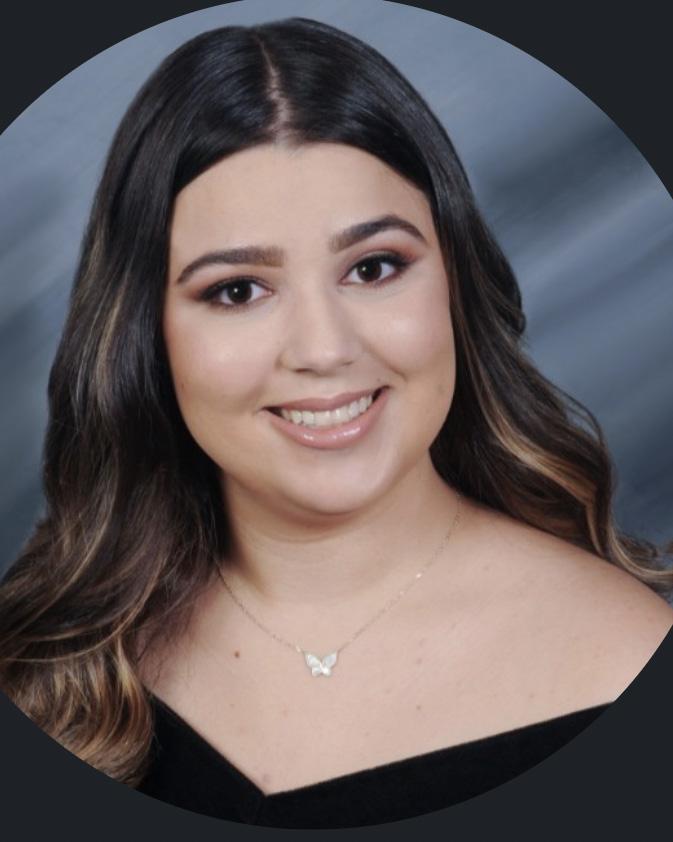
UM students can help spread awareness about period poverty by joining the PERIOD club on campus. The PERIOD club’s mission is to work towards fighting period poverty through “service, education and advocacy.”
“A period should end a sentence, it should not end education,” Eubanks said.
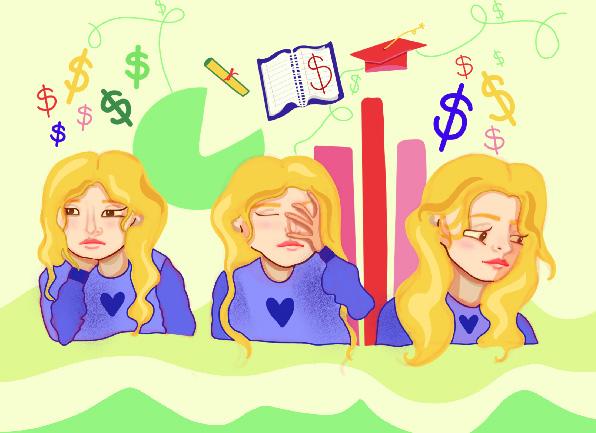
lowing close behind. That trajectory does not look like it will change. As a result, college is becoming locked behind an ever-increasing paywall, which may invite further class immobility if left unchecked.
If the top colleges continue to spike tuition fees, significant economic problems could follow. Working-class families have historically relied on scholarships and financial aid to attend university, but only 7% of students receive scholarships. On top of that, federally funded aid, such as FAFSA and Pell Grants, haven’t been keeping up with the increasing tuition costs.
as to why they oppose the relief plan. “Why is [tuition relief] fair to the people who didn’t get arguably comparable relief?” said Supreme Court Justice Samuel Alito, a conservative-leaning justice appointed by George W. Bush.
economically struggling students.
BYJAYDEN COHEN STAFF WRITERStudent loan debt is a tremendous concern that will only worsen with rising tuition costs and the lack of adequate debt relief. If 46th President Joe Biden’s national student debt relief plan does not pass through the Supreme Court, then this country’s debt crisis will balloon into a massive economic issue.
The devastation caused by this issue is far more widespread than many realize. Nearly 10 million Americans are currently paying off student loans greater than $20,000. Considering the median U.S. salary is just $70,000, these loans have a noteworthy, visible impact. Universities do what they can to remedy this situation — 85% of students have some form of financial aid — but the situation is still dire.
For many University of Miami students, finding and affording next year’s tuition and housing is a legitimate concern. Tuition and housing prices are rising across the country and UM is no exception. In today’s day and age, tuition hikes are inevitable and student financial strain is just as inevitable.
“When it comes to overall tuition, I feel like it’s really daunting,” Herbert Business School freshman David Parrish said. “Obviously, we should have to pay for tuition, but it was financially concerning when we saw my tuition go up this year.,”
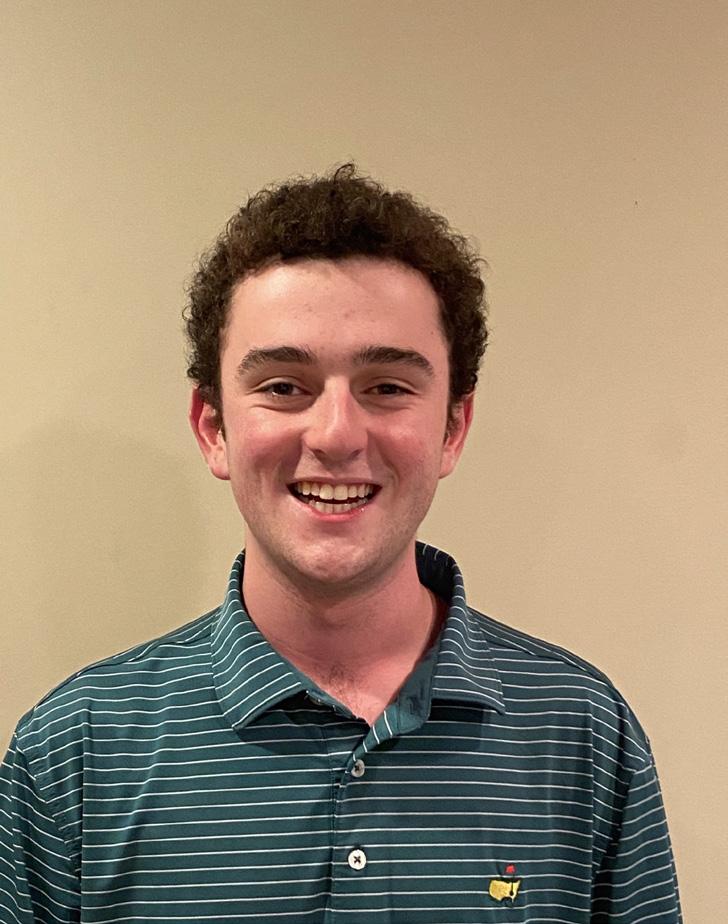
Private universities across the country have doubled tuition costs in the past 20 years alone, with public universities fol-
According to the Center on Budgeting and Policy Priorities, Pell Grants once covered 80% of tuition costs to a four-year university. Now, they only cover about a third of the cost. While Pell Grants are not the only financial aidsgiven, the shift illustrates that student loans are becoming the strategy to make it through college. As top institutions like UM — a school where the cost of attendance is nearly $90,000 in the 2023-2024 school year — continue to raise tuition requiring students take out loans, it will prevent lower economic classes from attending the top U.S. universities. For a country predicated on the “American Dream,” this is a pivotal contradiction to our cultural zeitgeist that needs to be addressed.
The predominant way UM students — and university students across the country — are expecting relief is with Joe Biden’s executive order to provide targeted debt relief to students. As much as schools try their best to help students afford college and its amenities with internal programs, a third party source would be extremely beneficial for struggling students.
“If I got tuition relief, it would help me so much, as I wouldn’t be paying off debt for the next 15 years of my life,” Herbert Business School freshman Joey Morana said. However, Biden’s student loan forgiveness plan faces strong headwinds to become reality. During oral arguments in a legal challenge to Biden’s plan, Supreme Court justices have “already shown skepticism” regarding the forgiveness plan, which may curtail nationalized tuition relief before it can impact student livelihoods. This is stark proof that the current Supreme Court Justices directly oppose relieving student tuition. Further infuriating is the argument
Alito’s attempt to block the loan forgiveness plan unveils a common rhetoric from conservative pundits that may endanger the working class. This rhetoric touts that student debt relief would create a fairness problem for those who already paid their debts and now have their tax money going towards other people. This can get people swept up about a so-called “unfair” executive order from Biden, when in reality, the rhetoric attempts to distract the population from the issue.
By painting student debt as an “ugly truth” of life, the downsides of a student loan forgiveness plan can become more apparent. However, student debt relief is actually easily attainable if the nation can rally behind this plan. Sure, taxpayers may be disgruntled with where their dollars end up, but the economic relief will far outweigh that discontent. Preventing the plan in the name of “fairness” — a plan that would relieve millions of people of crushing financial burden shows that Alito and other similarly-minded justices do not prioritize
Alito’s citing of fairness as a defense is ironic, as this bill attempts to bridge the gap between the privileged students that can easily afford tuition and the underprivileged students who struggle to pay through school. Student tuition relief is actually more fair that Alito’s proposed idea of blocking relief. After all, the 43 million borrowers that would be granted up to $10,000 in relief are an incredibly significant swath of the population that would have their livelihoods vastly improved with relief. Without the financial burden of student loan debt, graduates could focus on saving money to purchase a house or start a small business.
While this problem is uncertain on a national level, UM has demonstrated its dedication to helping students succeed academically and financially. Otherwise, the university would not be able to finance 100% of students’ demonstrated needbased aid in 2022’s fall semester.
The U.S. as a whole is leaving students high and dry with exorbitant tuition rates and no viable recourse that doesn’t end in years of debt. Education is the best investment one can make, but unfortunately the price tag is becoming less and less manageable.
THE MIAMI HURRICANE
March 29. 2023 - April 12, 2023
Head coach Jim Larrañaga cuts
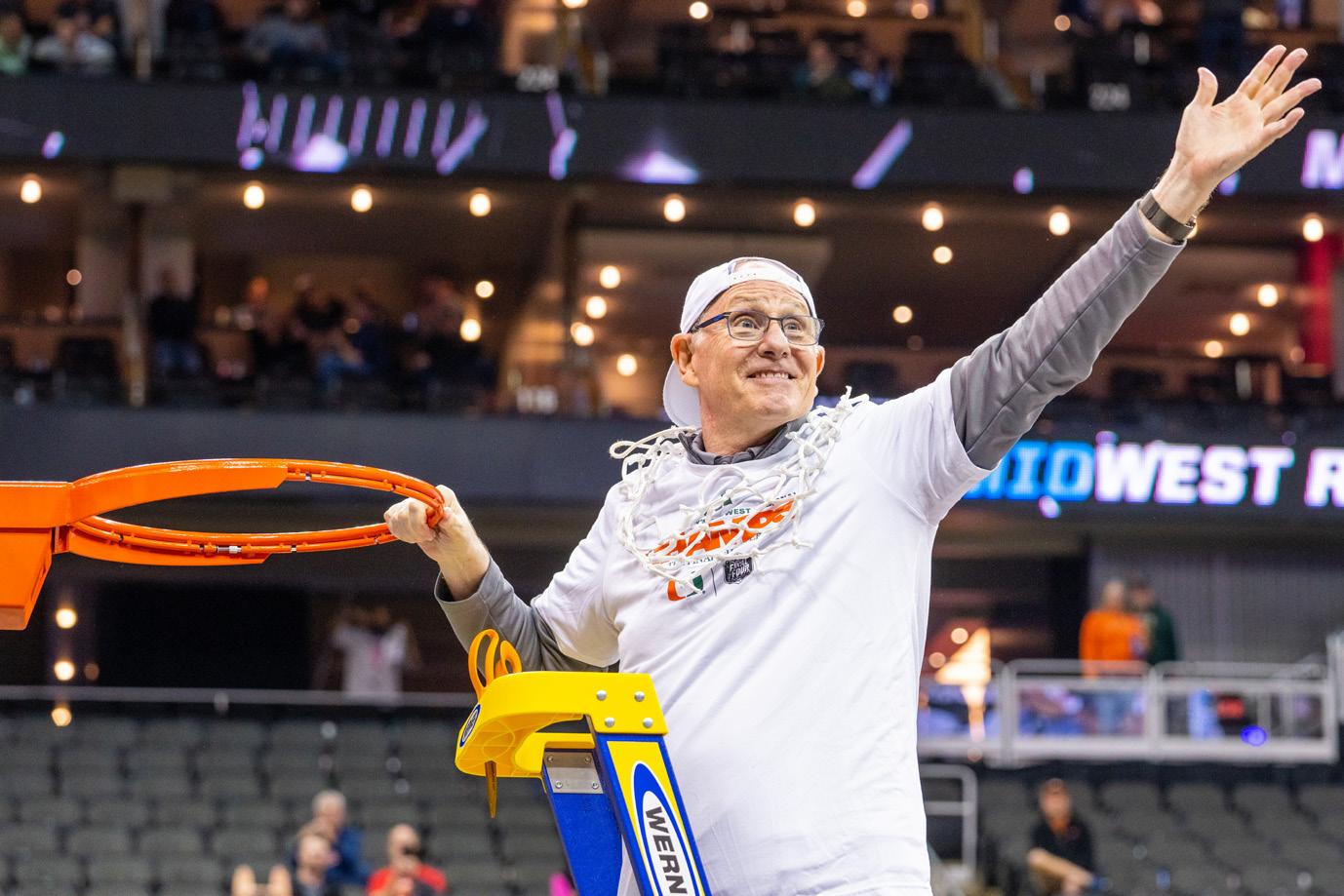
University of Texas. After inbounding the ball to himself off the back of a Texas defender, Wooga Poplar scores the first points of the ‘Canes’ comeback with a slam dunk.
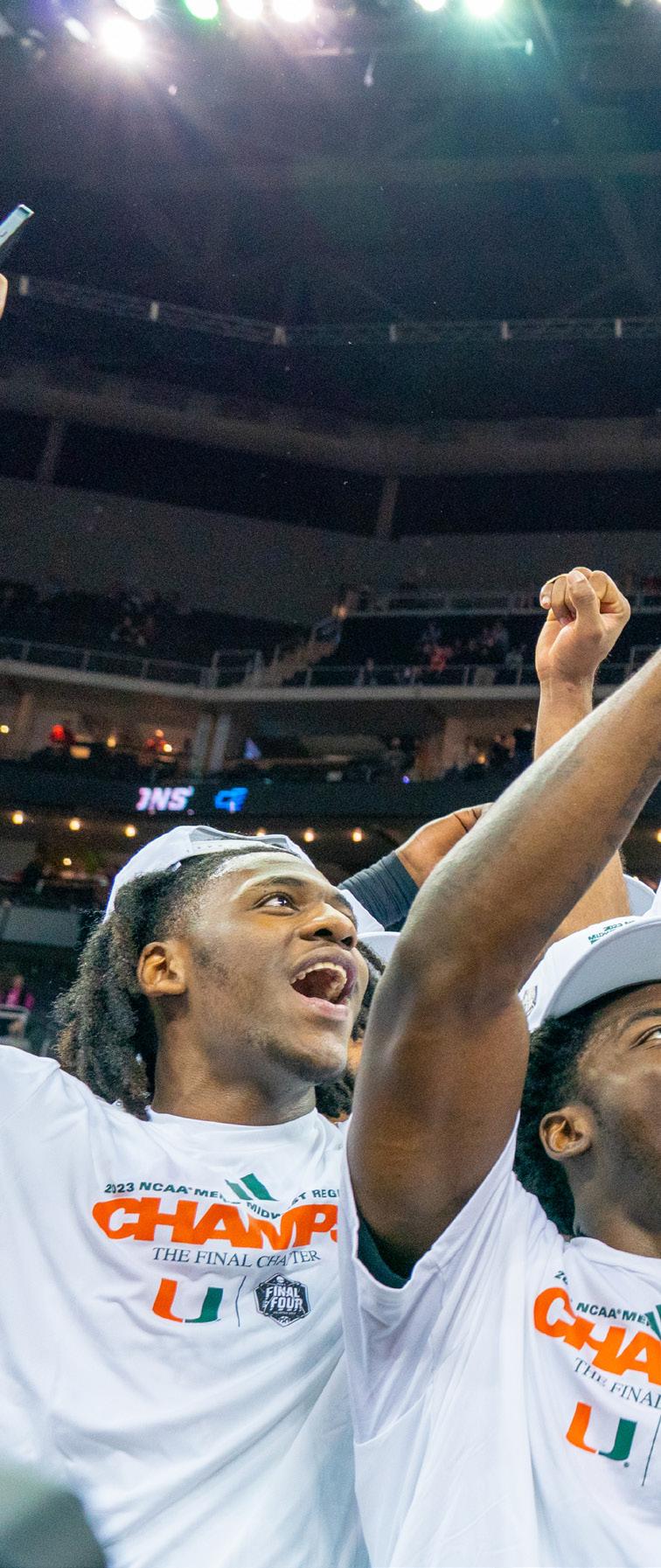
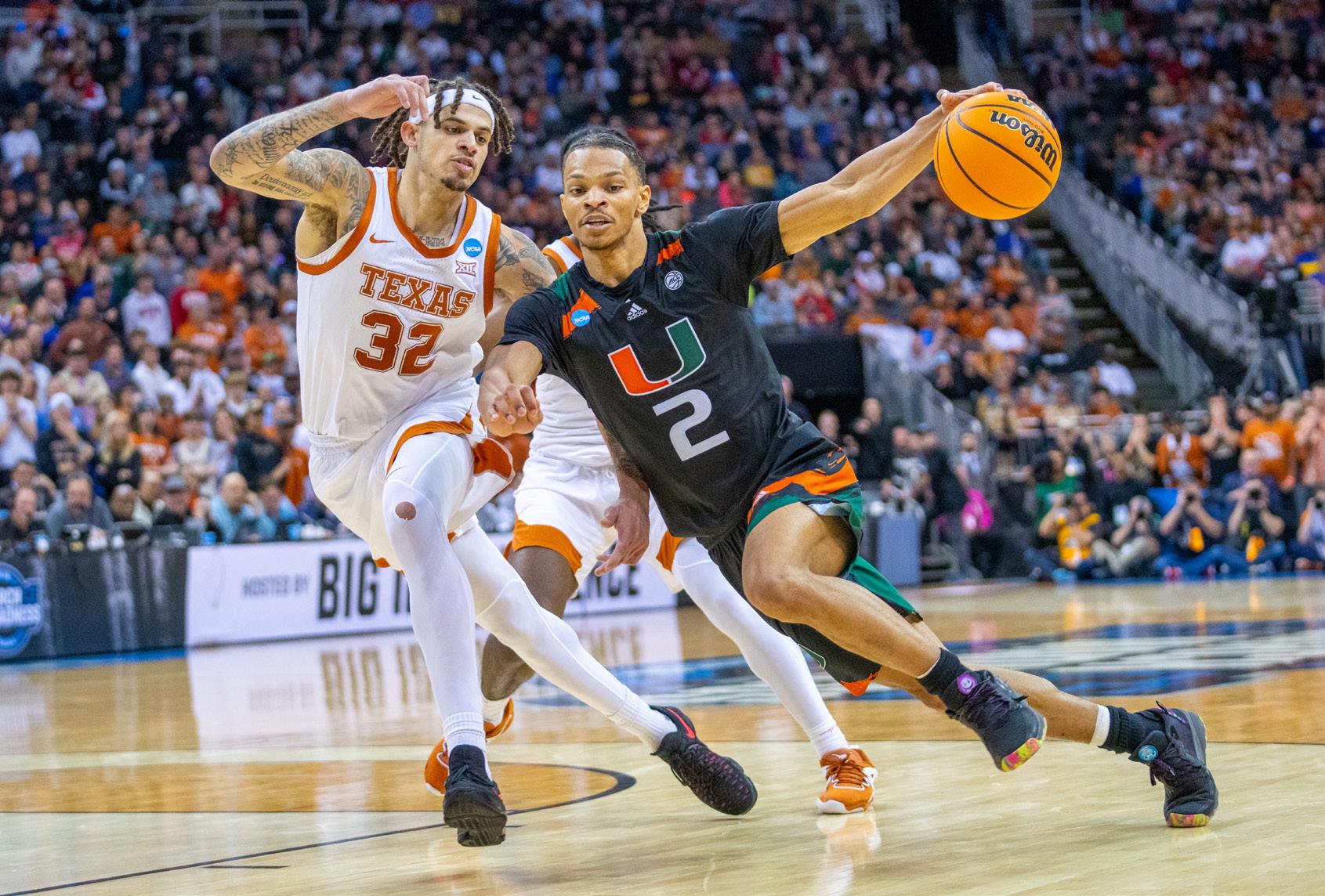

Third-year sophomore forward Norchad Omier smiles at the crowd before cutting down a piece of the net in basketball tradition.

net
celebration
win
Fourth-year junior guard Isaiah Wong drives to the basket during the second half of the game.
Sophomore guard Wooga Poplar cradles the NCAA Midwest Regional Championship Trophy in the locker room.

For the first time in program history, Miami Men’s Basketball has advanced to the Final Four. Facing the University of Texas in the Elite Eight, the ‘Canes trailed for most of the game until a second-half push, winning 8881 in the T-Mobile Center in Kansas City, MO on March 26, 2023.
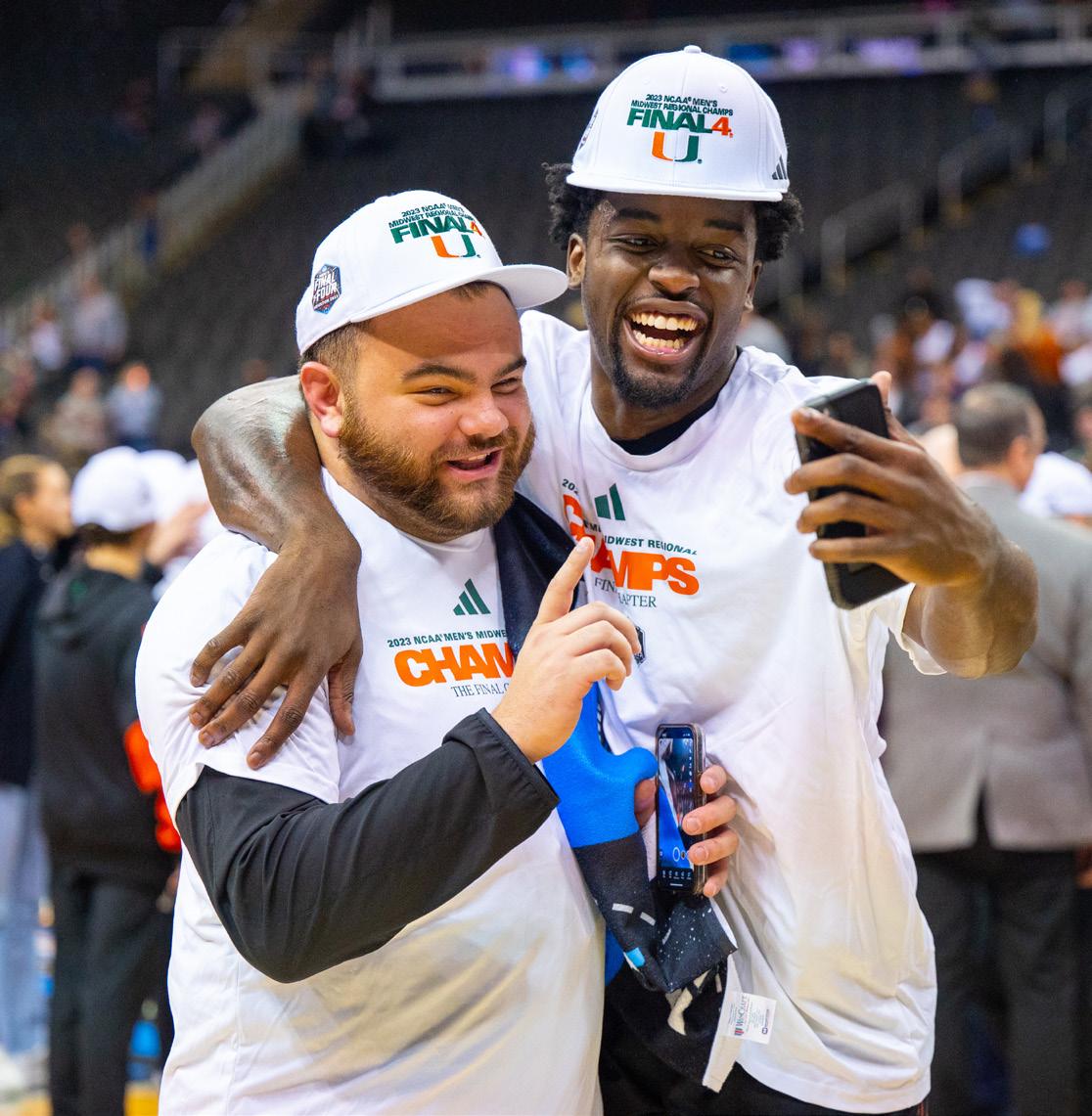
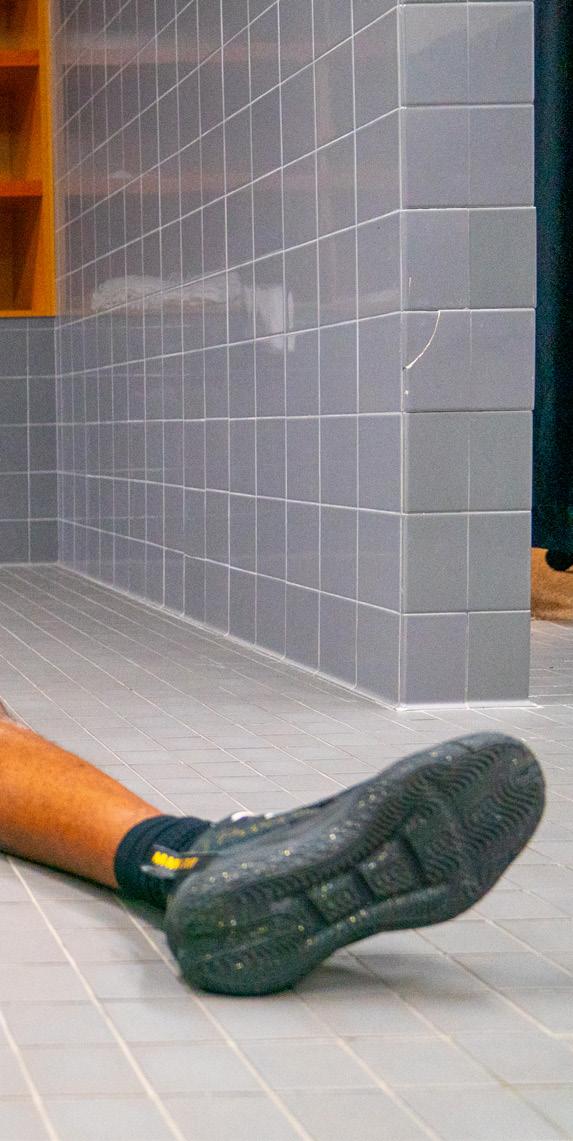
Sophomore guard Bensley Joseph takes a video on his phone with graduate assistant Pete Matthews.
The ‘Canes hold up the Midwest Regional Champion trophy in triumph.


Despite being friends for more than 10 years, UM alumni and Miami-based artists Jacqueline Gopie and Martin Casuso hadn’t done an exhibition together before. When the offer to curate a showing with Gopie arose, Casuso gladly took it.
“I love Jackie’s work,” Casuso said. “When we went to school together, I always admired it. So, any time to show with somebody whose work you like is always a good opportunity.”
Pieces by Gopie and Casuso share the spotlight in “Work and Play,” the latest exhibition at the University of Miami Gallery in Wynwood. While their work is different in medium and subject matter, both Gopie’s paintings and Casuso’s sculptures use bright colors, bringing life to the walls of the small gallery.
Gopie’s art is unique and purposeful. Each piece is not only made to be appreciated or brighten a room, but to infuence real change within her audience. Much of her work consists of scenes of Black and brown kids playing and enjoying leisure time, channeling a sense
of freedom and safety that is not usually associated with children of color in media.
“It’s not common to see Black and brown children in a fne arts environment,” Gopie said. “In terms of having fun playing, usually you see images of Black and brown children — they are sort of in this environment of deprivation. They’re inner-city, Black kids making the best of their environment. Or they’re island kids who [are] living in poverty, but look how happy they are. So, I want to change that perception.”
Gopie’s work is meant to be nostalgic and carefree, showing images of children of color swimming at the beach, running through felds of grass or riding bikes. She hopes to use this sense of relatability to override the stereotypical portrayals of Black children audiences may have internalized.
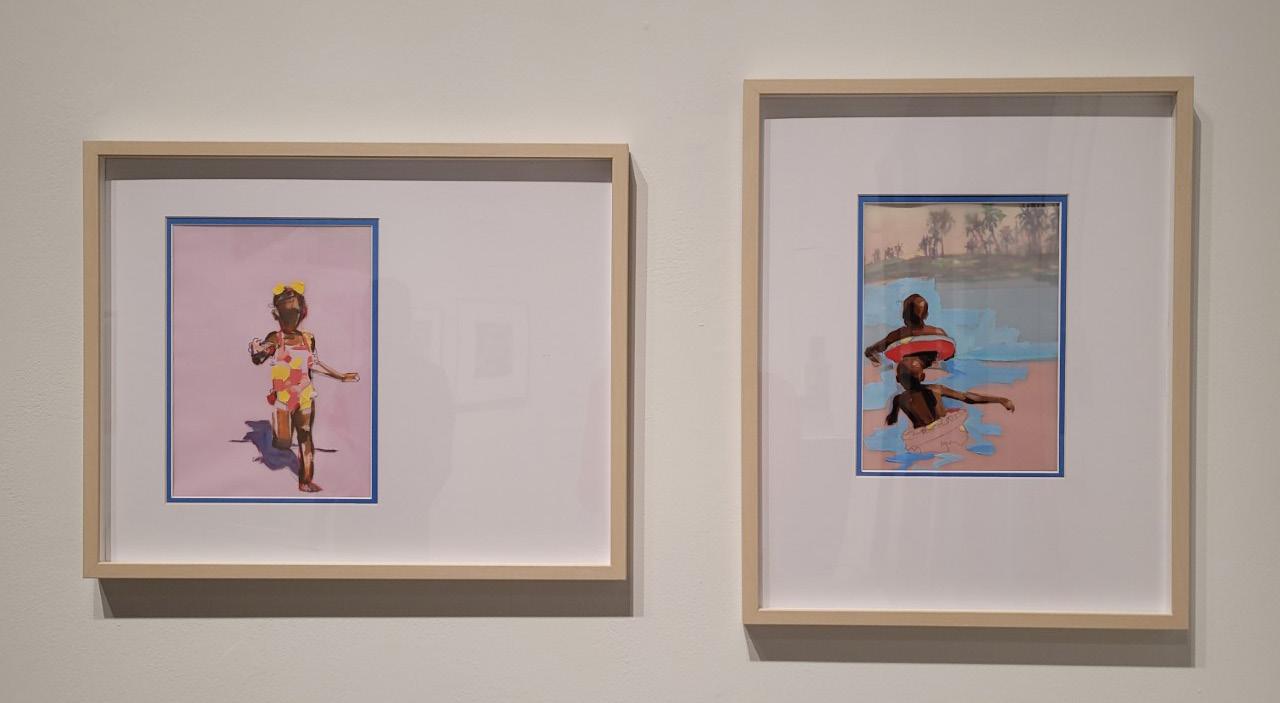
“It’s sort of nostalgic, or it has this feeling of something you can relate to,” Gopie said. “In doing that, it sort of changes your perception, maybe just a little bit, about who’s entitled to freedom, who’s entitled to fairness, who’s entitled to leisure — to be free at the beach.
Because when you look at an image of a child hanging out on the beach, in the back of your mind, you know that they are enjoying freedom and that someone is taking care of them.”
Gopie began making art only after she had retired from the U.S. Army, where she served as a nurse for 22 years and worked her way up to an administrative position in Washington, D.C. Essentially, her job had turned into a lot of paperwork, and she found that while she enjoyed aiding people and didn’t enjoy the emotional labor of patient care. In the end, she believed retirement was what was best for her, but this didn’t mean her career was over.
“I just thought, I’m going to be retired, I can do whatever the hell I want,” Gopie said. “What would be fun, interesting and completely different?”
While she had indulged in drawings and doodles as a kid, she never tried to explore it further.
“I’d never taken any art classes,” Gopie said. “And so, I thought maybe I’ll go to school for art, because that sounds interesting.”
In 2002, shortly after her retirement, she moved to Miami with her partner and began to pursue a bachelor’s degree at UM. Initially, she intended to be an art teacher or instructor, but fell in love with painting as an undergraduate. Almost a decade after earning her bachelor’s degree, she returned to UM for graduate school.
Gopie credits her former professor, Walter Darby Bannard, for helping her fnd her own art style during that time. Coming into grad school, she had learned how to imitate the styles of other painters well, but she had no distinct style
of her own.
“My professor, Darby, really was a huge infuence in terms of giving me the confdence and the courage to just really take steps that I wouldn’t have done before,” Gopie said. “He just gave me a lot of room to make mistakes and learn from them.”
Besides earning her graduate’s degree, one of Gopie’s proudest achievements as an artist is being chosen to receive a Joan Mitchell grant in 2016. She was also granted a residency at the Joan Mitchell Center in 2019.
Graduate school is also where she met Casuso, who was also pursuing a master’s degree at UM for Sculpture. Both artists graduated in 2012 and have kept in touch since. Today, Casuso not only continues to make art, but also works as a Facilities Coordinator at the Lowe Art Museum, located on campus. While his role at the Lowe doesn’t necessarily involve the artwork on display, it still affects his art in many ways.
Casuso incorporates thrifted and recycled materials into his work, giving it a vibrant, new life. Much of his work that is being shown in “Work and Play” is made from materials he was able to collect from the museum.
“A lot of the time with my work, I fnd that materials will sort of direct me to what I want them to be,” Casuso said. “I fnd an object and suddenly something comes to mind that I want to create with it.”
Typically, Casuso creates 3D sculptures. However, when working with the materials he collected from the museum, such as vinyl used for wall text and discarded mats, he found himself creating 2D collages instead.
“Those things came together to create these frameable pieces,” Casuso said. “[The idea] started during the pandemic when I was often working alone at the museum. Some of the early ones are a little chaotic-looking, but they became quieter and calmer in the last year or two.”
Since these pieces were simply meant to be something he did to keep himself busy, he hadn’t found a space to show them. When he was given the offer by Gopie to show some of his work alongside hers at UM’s Wynwood gallery, he found that it was a great opportunity to fnally bring these pieces to light.
Milly Cardoso, Gallery Director of the University of Miami Gallery, said the idea for “Work and Play” frst came from Chair of Art and Art History, Nathan Timpano.
“The purpose was to feature artwork from our alumni, and possibly host a different alum every year,” Cardoso said. “It was a lot of fun for me to put together. Martin and Jackie are professional, talented and wonderful to work with.”
Since the gallery relocated into the Wynwood Building in 2012, it has been a great venue for the Department of Art and Art History to showcase the work of students, local artists and alumni. It has also helped students build connections with other artists in the heart of Wynwood’s Art District.
“It would be great to have more students come [to the gallery] to see the work that their alumni and student body do,” Gopie said. “Work and Play” will be available for viewing through March 31st. The University of Miami Gallery is open to the public Wednesday through Friday from 10 a.m. to 4 p.m.
Singing the entire “Emails I Can’t Send” album and more of her greatest hits, Carpenter exceeded fan expectations through her enchanting concert on March 16 at the Hard Rock Live! in Ft. Lauderdale, Fla. With a perfect balance of singing, personal anecdotes and audience engagement, this concert is a must for fans of her music.
Carpenter expressed her nerves regarding the tour opener being in Florida, as she (understandably) hasn’t had the best luck here in the past. However, this concert was surely memorable for both her and everyone in the crowd.
Carpenter opened with the album’s titular song, “Emails I Can’t Send,” an emotional ballad about the complicated relationship she shares with her father. Her vocals were phenomenal throughout the 90-minute concert and sounded just as good, if not better, than the studio recordings.
In addition to singing the whole album, Carpenter also sang some throwback songs for the day-one fans, including “Honeymoon Fade,” “Paris” and “Sue Me.”
Unfortunately, “Can’t Blame a Girl for Trying” didn’t make the setlist, a favorite of mine when I was younger.
During each show, Carpenter performs a different cover and for the opening night of the tour,
she beautifully sang “Dreams” by Fleetwood Mac. The song was interrupted midway through when Carpenter checked on a fan in the general admission foor and put her audience members’ safety frst. Despite the pause, it was still a wonderful cover of the classic song.
The deluxe edition to “Emails I Can’t Send” was released on March 17, the day after the concert. However, Carpenter surprised us with a performance of two unreleased songs from the deluxe edition: “Opposite” and “Feather.”
Carpenter encored her most popular songs from the album, “Nonsense” and “Because I Liked a Boy.” As she closed out “Non-
sense,” members of the audience anticipated the song’s surprise outro. At every show, Carpenter fnishes the song with new lines that reference the city her tour stops in. The outro for our show did not disappoint.
“Because I Liked a Boy” made for a phenomenal end to the spectacle. She sang the song fawlessly and as the outro played, heartshaped balloons fell from the roof into the pit, staging a magical moment.
My favorite performances included “Nonsense,” “Already Over,” “Fast Times” and “Because I Liked a Boy.” The fantastic live vocals coupled with the sparkly costume, colorful lighting and cute set made for a very
enjoyable concert.
One unexpected highlight of the show was Carpenter’s live rendition of “Decode,” which gave me an increased appreciation for the song.
Another highlight came prior to the show, when Taylor Swift’s “All Too Well (Ten Minute Version)” played through the speakers. The entire audience screamed the ten minute song together as we waited for Carpenter to begin her show. It was a wholesome moment and a good precursor to Swift’s upcoming tour.
If you enjoyed “Emails I Can’t Send” or like Carpenter, the tour is well worth attending!
Rating: 4/5
“The Mandalorian” season 3 aims to fx sequel writers’ mistakes
Eliza Lee, Contributing Writer
“The Mandalorian” is taking a sharp turn from critically acclaimed frst seasons, and viewers are on the fence about it.
The series captivated audiences for the frst time in December 2019 with its mysteriously masked lead and adorable Baby Yoda, skyrocketing the Disney+ streaming service.

Mandalorians are not new characters in Star Wars. Their origin in the flms is frst seen in Boba Fett’s inherited armor, and eventually we see Mandalore in the “Clone Wars” and “Rebels” TV series.
Many fans enjoyed seeing the “Star Wars” world between the original trilogy and before the sequels. The series holds a whopping 14 Emmy awards, with nearly 3 times that number in nominations.
Until recently, the series received major praise for including characters such as BoKatan Kryse and Ahsoka Tano. By Star Wars standards, it was near-perfect.
The season starts off with Din seeking redemption after removing his helmet to look at Grogu at the end of season 2. He is
instructed to bathe in the Living Waters on Mandalore. Enlisting the help of Bo-Katan, he ventures to Mandalore, fnds out that it isn’t cursed and redeems himself in an underground pool in episode 3.
We then see a new, shiny Coruscant, beaming with the New Republic. Dr. Pershing, the scientist forced into the Empire’s research, speaks on the “Imperial Reintegration” program. He befriends a former Imperial offcer who sets him up to be captured by New Republic offcers and put under intense electrotherapy.
Before the season aired, Jon Favreau clarifed the “Mandalorian” timeline in an interview for the podcast “Skytalkers.” Seasons 1 and 2 take place over the course of “many years” without a specifc number (for reference, the frst season previously took place over 6 months), and Grogu trained with Luke Skywalker for about 2 years.
This clarifcation from Favreau stretches the timeline between the end of the Empire and the beginning of the First Order. “The Mandalorian” will tie itself into the Sequel Trilogy.
“The Mandalorian” will fx the dumpsterfre of continuity that the sequels left behind. Dr. Pershing continuing to pursue his cloning research on force sensitive beings will inevitably lead to the creation of Su-
preme Leader Snoke and the development of the First Order.
This oversight has ruined the season, as plot corrections are becoming an oversight, neglecting a major villain or confict for the actual main characters of the show. So far, the season looks like it’ll be Din training Grogu to be a Child of the Watch with the possibility of a romantic subplot between him and Bo-Katan.
I’m not sure what I was expecting, but it wasn’t this. I was hoping to see more of Ahsoka, like a preview of her show or different pockets of displaced Mandalorians. I also love the relationship between Din and Grogu, but where’s the plot? It was over in three episodes and the fourth was just fller — although we do see Bo happy, a rare sight.
Ana Santana, a sophomore motion pictures production major and longtime “Star Wars” fan, expressed her frustration with the show.
“I think that the story structure needs some fne tuning,” Santana said. “The arc is lost within these mini side-quests, and most fans are expecting something more out of the show that had two pretty great seasons.”
Like Santana, I am disappointed. I hope
my opinions are proven wrong by the end. While I have no issue with the writers’ attempt to smooth over what happened in the pre-prequel, using “The Mandalorian” to do it is 100% the wrong move.
This popular show has already established its viewers, so why change it? I’d rather see an expansion on Rey and Kylo’s childhoods, Luke’s revival of the temple (looking at you, Sebastian Stan!) and an explanation of the political and developmental changes.
17 years ago to the day, head coach Jim Larrañaga led George Mason to its frst-ever Final Four. Now, he has made it back — this time with the Miami Hurricanes, a team dropped by the university from 1971-85 due to a lack of support.
Safe to say that won’t be happening ever again.
Hurricane fans erupted as ffthseeded Miami overcame a 13-point second-half defcit to stun No. 2 Texas 88-81 on Sunday evening at the T-Mobile Center in Kansas City. Orange and green confetti covered the court while the Hurricanes cut down the nets and hoisted the Midwest Regional trophy — a similar scene to when Miami beat Pittsburgh for the ACC co-regular season title at the Watsco Center mere weeks ago.
The ‘Canes are now heading to Houston for their frst Final Four in program history.
“It’s the same exhilaration … because you just love it when your players accomplish a goal they set out before the season,” Larrañaga said when comparing his feelings 17 years ago to today.
Miami’s victory comes only one year after advancing to its frst-ever Elite Eight, where the Hurricanes were dominated by the Kansas Jayhawks. This time around, the ‘Canes ousted the Big 12 tournament champions thanks to a game-high 27 points by Jordan Miller, who was a perfect 7-of-7 from the foor and 13of-13 from the line.
“That loss [to Kansas] sat with me for a really, really long time,” Miller said. “Having the opportunity to right your wrongs and get past something that stumps you previously is a great feeling … What I’m most proud of is the will and the togetherness of this
team.”
All fve of Miami’s starters fnished in double fgures, including 14 points from ACC Player of the Year Isaiah Wong. The ‘Canes stuck together, even when things looked grim.
Texas held the lead for nearly 28 minutes thanks to its superb offense. The Longhorns drilled seven 3-pointers on 54.8% shooting from the foor in the frst half to take a 4537 advantage into halftime. Texas soon led by double digits and were
“Normally, we’re the faster team when we take the court, not the biggest, but we’re normally the fastest,” Larrañaga said. “And I thought Texas showed that they’re every bit as fast, and maybe even a little faster than us, athletically.”
But then something changed. The Hurricanes more than doubled Texas’ score in the last 10 minutes. Wong, who had just two points in the frst half, had eight points in that span to lead Miami back. Miller secured
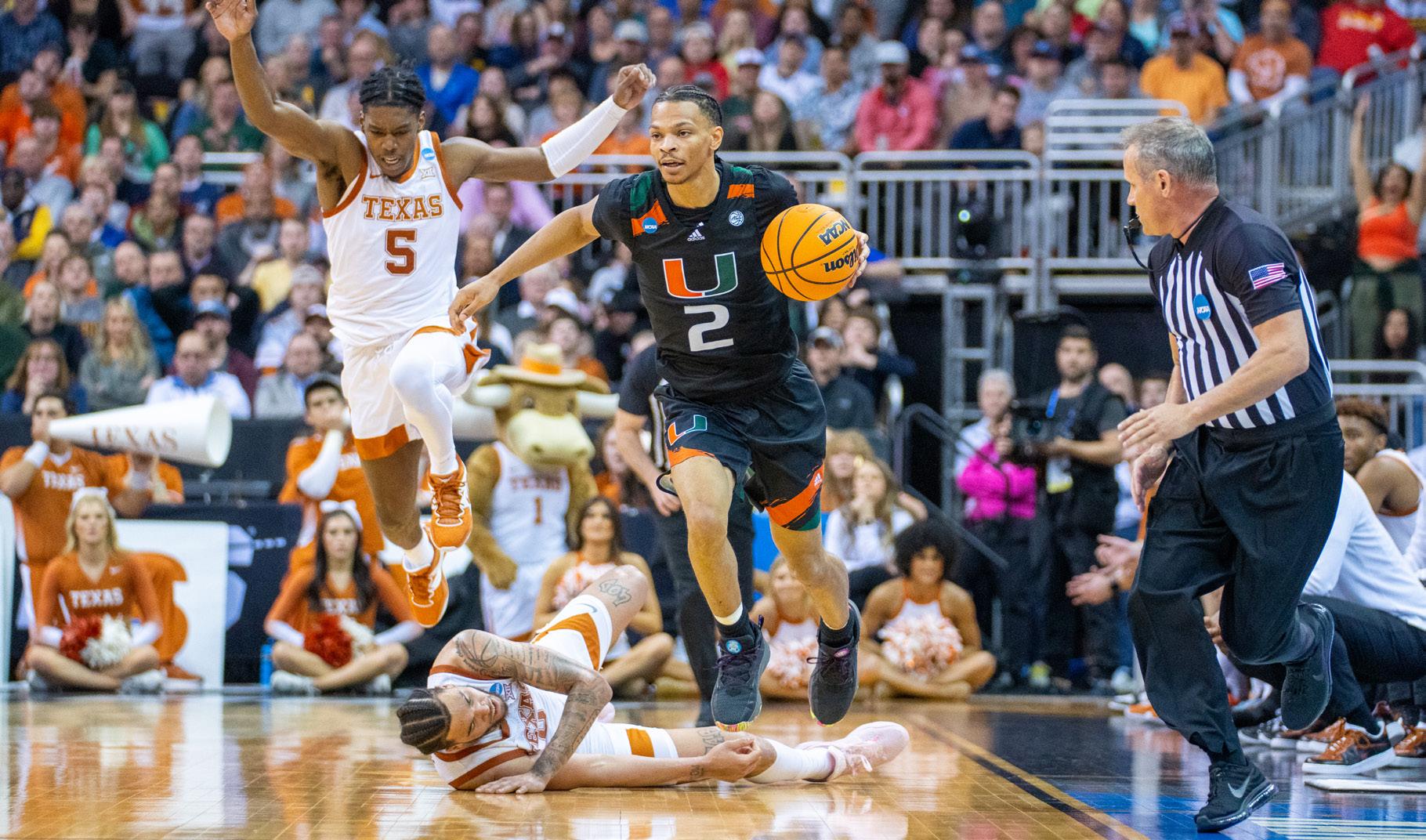
When the Hurricanes tied the game at 75 with just under four minutes to go, Miami knew it could win.
“I would just say I thank the ACC for preparing us for these types of games, just coming in, every game we play in the ACC is always a close game,” Wong said. “It’s always a shot to win. I feel like coming into March we’d been in those types of situations, and we played good.”
All year, the Big 12 was widely considered the best conference in
a popular upset pick over Miami in the Round of 64, and the fourthseeded Indiana Hoosiers were favorites against the ‘Canes in the second round. Miami won that game by 16 points.
Then, the Hurricanes dominated No. 1 seed Houston in the Sweet 16, winning 89-75 after being 7.5-point underdogs. Through it all, Miami is still dancing.
And forward Norchad Omier, the frst Nicaraguan to play Division I basketball, couldn’t be more grateful. “Making it this far is just, I just gotta sit down and think about it. And it’s amazing, man. I’m from Nicaraqua, a country where basketball is not even a real predominant sport,” he said.
Miller, Wong, and guard Nijel Pack were named to the Midwest Regional All-Tournament Team, and Pack was named the Most Outstanding Player. The sophomore guard is making quite the mark in his frst NCAA tournament appearance, averaging 18.5 points through four games. The Kansas State transfer put up 15 against Texas.
“How hard we fought to get back in this game and to come back and actually win this game, especially on a stage like this, it was an amazing feeling I can’t even put into words … I’m loving the experience so far, but we’ve still got more work to do,” Pack said.
up a game-high 13 points with 13:29 remaining.
Texas’ physicality and speed pushed Miami off rhythm, allowing the Longhorns to force turnovers and beat the ‘Canes in transition, where they used alley-oops to ignite the Texas-heavy crowd. Guard Marcus Carr led the Longhorns with a gamehigh 17 points, and forward Timmy Allen was right behind with 16.
the win with eight free throws down the stretch.
“There’s no big secret in this. We’re very good but we’ve got to play very good,” Larrañaga said he told his team after calling a timeout in the second half. “[From that point on], our defense dramatically improved. Our rebounding improved. And once we get stops, we really can score the ball.”
college basketball, but the last ACC team in the tournament dethroned its winner in a game Miami could have quit multiple times. Miller attributed his team’s perseverance to one simple factor — “None of us wanted to go home.”
The Hurricanes made a habit of proving doubters wrong all season long, particularly in the NCAA tournament. 12th-seeded Drake was
Miller added, “After the buzzer sounded, it felt surreal. Being able to go on stage, hold up the trophy, cut down nets again, truly blessed … we’re going to celebrate tonight, maybe a little bit tomorrow. But it’s not over.”
Now the Hurricanes are off to Houston, where they will face fourthseeded UConn on Saturday at 8:49 p.m.
They were up 21 points at the start of the third, then they were down with less than a minute on the clock. Sophomore guard Jasmyne Roberts sank a foater, got fouled, and then hit two free throws to bring the ninthseeded Miami Hurricanes back into the lead against fourth-seeded Villanova with 37 seconds left on the clock.
They can’t stop dancing.
‘Canes women’s basketball held its lead to the buzzer to post a fnal score of 70-65 and advance to the Elite Eight for the frst time in program history. The NCAA has only ever seen one other team advance this far into the tournament as the No. 9 seed — the underdogs have done it again.
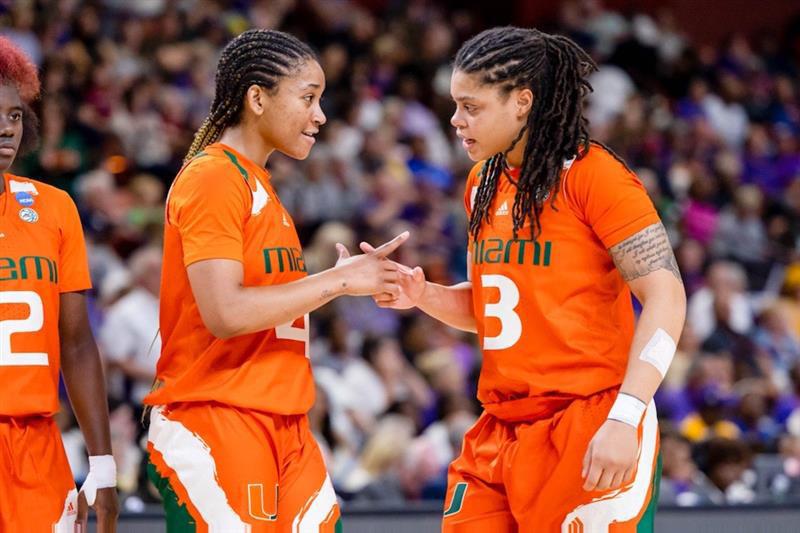
In the frst game of the tournament, Miami pulled off a 17-point comeback in the second half. In the second round, it knocked one-seeded Indiana out of the running. Roberts made
crucial plays in the fnal seconds to regain their lead and defeat the Wildcats.
The sophomore guard scored 26 points through the game, with a game-deciding nine in the fnal quarter.
“At that moment, it was just like, you won the game for us right there,” veteran forward Destiny Harden said about Roberts. “I’m proud of her.”
Harden also played a key role in the game, defending Villanova guard Maddy Siegrist, who made just eight of her 29 shots and missed multiple shots in the fnal minutes of the game, after she was Miami’s biggest threat coming into the contest.
Siegrist is the leading point scorer in the nation.
“Maddy is everything she’s been advertised…the only thing I can kind of brag about is it took 29 shots for her to get 31 points,” UM head coach Katie Meier said.
The ‘Canes ran into foul trouble
in the second half of the game and watched their 21-point lead shrink until the Wildcats took over. With fve minutes left on the clock, Miami was struggling to get its starters on the court, and the game could’ve been won by either team.
But the underdogs did what underdogs do best, and the Hurricanes pulled off the upset. Roberts made a rebound off a shot that Harden missed, and this is when she led the ‘Canes to the win. She made two free throws and was fouled again with 11 seconds left on the clock.
“At the free-throw line, honestly, I was just telling myself like these are the biggest free throws of your life, you’ve got to hit these,” Roberts said. Meier was so excited about the win that she forgot to shake hands with Villanova head coach Denise Dillon after the game, and made sure it was the frst thing she addressed in the post-game press conference.
“We know how to close out a game, and I’m really proud. I can’t believe it. I’m not going to act cool. This is awesome,” she said after apologizing to Dillon.
Meier is confdent going into Sun-
day, saying, “We’re in the Elite Eight, you’ve got to be crazy if you think we’re going to doubt ourselves.”
The Hurricanes will return to the Bon Secours Arena to face LSU for a spot in the Final Four.
Miami fought with blood, sweat and tears, but its frst appearance in the Elite Eight was not enough to keep its historic streak going to the Final Four in Dallas next weekend. The third-seeded Louisiana State University (LSU) Tigers took down the No. 9 Hurricanes, 54-42, in the Bon Secours Wellness Arena on Sunday, March 27.
Sophomore guard Jasmyne Roberts had a phenomenal weekend, bringing the ‘Canes to a win in the last seconds of the Sweet Sixteen and then against LSU, scoring a team-high 22 points with seven rebounds and three assists.
No other player from Miami scored in double digits and the Hurricanes had a season-low of just 42 points. They shot 0-of-15 from the 3-point range and just
31.6% from the foor.
“Things were not going our way… that’s a tough time for that to happen,” UM head coach Katie Meier said.
Senior forward Lola Pendande was escorted off the court after receiving a blow to the torso in the third quarter, followed by a pause in the game due to veteran player Destiny Harden’s mouth pouring with blood, and fnally, sophomore La’Shae Dwyer sitting the rest of the game out after rolling her ankle in the fourth quarter.
It was in the third quarter that the win began to slip from the ‘Canes and the Tigers were steadily pulling ahead and ultimately took home the title of Regional Champions with a spot in the Final Four.
Miami started the tournament strong, making a 17-point comeback in the second half of its game
against Oklahoma State. Then, it went up against the one-seeded Indiana, where the team gained adoration from much of the country after silencing a packed Hoosiers crowd.
And in the following round, the Hurricanes defeated fourth-seeded Villanova to advance their frstever Elite Eight.
Despite this season going making history for the ‘Canes, it was evident the players were hurting after falling to LSU. There were tears falling as they walked off the court, followed by a solemn press conference with the haunting sounds of the Tigers celebrating in the background.
“We kept fghting, and we never quit …We knew it wasn’t going to be easy, but that was really diffcult to have the plays – I’m so proud of my team,” Meier said.
LSU head coach Kim Mulkey
also expressed her respect for Katie and the team, stopping to speak to the athletes in the handshake line.
Harden explained some of what she heard from Mulkey, saying that she told her that Miami was “one of the toughest teams they’ve played. [Mulkey was] just telling me that she loved my game, she loved that I played hard.”
That was the last game that Harden will play as a Hurricane. She holds deep respect from the team, especially Meier, who saw her hit a game-winning basket nearly 10 years ago when Harden was just 15 years old.
“She’s sitting up here because she’s an admirable, honorable, incredible person … She should be proud and her shoulders should be back and her chin should be up because she carried this program. She carried it with her attitude,
with her effort, with her toughness and her loyalty,” Meier said.
“I want her up here because I’m celebrating you, Destiny Harden, because you have changed this program and we are never looking back thanks to you.”
Harden was teary-eyed on the stand. She congratulated the men’s team on making it to the Final Four and said that Miami women’s basketball has big things ahead.
“I think Miami is in good hands with [Roberts]. I think the world is just now seeing her, but we seen it all year long, all last year,” Harden said. “I can’t be prouder of her.”
Meier left Greenville, S.C. with her shoulders back and chin up, saying “We’ve shown absolutely raw emotion. No one steals our joy, never can, never will … I think [the future] looks pretty darned good.”
I never thought I’d be writing this, but Miami men’s basketball is in the Final Four of the NCAA Tournament for the frst time in program history.
The Hurricanes redeemed last year’s Elite Eight loss by overcoming a 13-point defcit against second-seeded Texas to win the Midwest Regional Championship on Sunday.
“That loss sat with me for a really long time,” Miami guard Jordan Miller said after the win. “Having the opportunity to right your wrongs and get passed something that stumped you previously is a great feeling.”
The road to the Final Four hasn’t been easy either. Fifth-seeded
Miami pulled off an eight-point comeback against Missouri Valley Conference champion Drake, along with three upsets against No. 4 Indiana, No. 1 Houston and Texas.
However, the next matchup might be the toughest. The Hurricanes will face the West Regional champion UConn Huskies in the national semifnal of the NCAA tournament. Although UConn is a four-seed, it has been playing some of its best basketball as of late.
The Huskies have beaten their NCAA tournament opponents by a combined margin of 90 points and demolished No. 3 Gonzaga 82-54 in the Elite Eight. UConn’s elite defense is a big reason why.
Miami has scored 80+ points in
all its tournament games, apart from Drake. Still, Drake and UConn have the commonality of focusing their game on great defense. The Huskies are currently ranked as the 11th best adjusted defensive team, according to Kenpom.com, and average 4.5 blocks per game in the tournament while forcing eight turnovers per game too. UConn also has a true rim-protector in Donovan Clingan, who has nine blocks in just 50 minutes in the tournament. Additionally, their height and size are more signifcant than Miami’s. All UConn’s players are 6-foot-5 or taller in its starting lineup. Miami’s starting fve only has two players over 6-foot-5, Jordan Miller and Norchad Omier. Size hasn’t been a trouble for
the ‘Canes, however. Throughout all of Atlantic Coast Conference (ACC) play, they have had to face physically larger opponents, and Miami ended up as the ACC regular season co-champions regardless. In the NCAA Tournament, the quickness and shooting of Miami’s guards have made up for its lack of size. Guards Nijel Pack and Isaiah Wong are averaging 18.5 and 16.5 points, respectively, in the tournament, which includes challenging shots from extreme angles.
Miami has also had success in fast-paced transition offense. Forward Norchad Omier is not only averaging 13.5 rebounds, but he has been vital in his outlet passes to the guards, who have made easy buckets. Of the 64 teams that participated in the NCAA tournament,
Miami ranks 15th in adjusted tempo on Kenpom.com and has beaten their opponents by an average margin of 11 points per game.
What happens in transition will be essential for the Hurricanes, as UConn ranks outside the top 200 in adjusted tempo. UConn must ensure the ‘Canes have the least success possible from the feld. Miami is shooting a red-hot 54% from the foor through the entire tournament, and any player on the squad could heat up. However, if Miami gets the shot selection they want, it’ll be a tough day for UConn.
UConn and Miami will battle Saturday at NRG Stadium in Houston, Texas. Tip-off will be at 8:49 p.m. EST and will air on CBS.
It was a tough weekend for ‘Canes Baseball, as they lost their three-game series in a top20 matchup against the No. 2 Wake Forest Demon Deacons in Winston-Salem, North Carolina.

On Saturday and Sunday, the No. 17 ‘Canes came up short with 4-1 losses both days, despite strong starts. At the top of the frst inning on Saturday, third baseman Yohandy Morales hit a home run, but this turned out to be the only score of the game for the ‘Canes.
The game was tied 1-1 at the bottom of the frst, but the next few innings had no score, largely due to top-tier pitching by both teams. Sophomore pitcher Gage Ziehl of Miami got the start on Saturday. He was drafted to the Chicago Cubs right out of high school in 2021, and ‘Canes head coach Gino DiMare agrees that Ziehl has the ability to be a great pitcher.
“He pitched good enough to win. This is a tough ballpark to pitch in. I thought he threw outstanding and was very effcient,” DiMare said.
The ‘Canes (15-9, 5-4 ACC) came close to another score in the fourth inning with Ian Farrow at bat and a chance to load the bases. A strikeout closed that opportunity and kept the score tied. Miami looked for another chance to load the bases and score in the ffth, but the strikeout of Edgardo Villegas, Wake Forest pitcher Sean Sullivan’s eighth strikeout of the day, ended the inning.
Wake Forest (22-3, 7-2 ACC) drilled the game-winning RBI single in the ffth, as Tommy Hawke put the Demon Deacons up 2-1.
Wake Forest brought in pitcher Cole Roland in the sixth, and pitcher Seth Keener in the eighth. The Deacons’ pitching recorded more than 10 strikeouts for the 19th game this season.
Miami brought in two new
pitchers in the seventh, including freshman Chris Scinta and Miami native Alejandro Torres.
Morales faced a potentially game-ending injury in the eighth while sliding into third base, but fortunately was able to stay in the game.
Wake Forest took its frst series win over Miami since 2017 following a Friday victory over the ‘Canes. Both teams came into Saturday’s game 5-2 in the ACC, and Miami had fve straight wins before this series.
“Our offense has picked us up for most of the year, but we’re going through a bit of hiccup over the last two games,” DiMare said. This hiccup continued into the game on Sunday, as Wake Forest completed the series sweep.
The great weather on Saturday did not carry into Sunday however, with a weather delay pushing frst pitch back by two hours. There was no score by either team until the top of the third, when Miami native Carlos Perez hit a home run.
A win looked possible for the ‘Canes until the ffth. A home run by Pierce Bennett allowed Wake Forest to score three runs, giving them a two-run lead over Miami.
Pitching was a problem for the ‘Canes at this point, and they went through fve new pitchers throughout the rest of the game. Ultimately, their pitching cost them the game and led to Wake Forest’s win.
“We pitched well the last two
games, but we didn’t get any timely hitting,” DiMare said. “Credit to them for how they pitched, but we need to do a better job, especially when we have guys on base.”
Wake Forest scored their fnal run in the seventh, and the game ended at the bottom of the eighth. Miami will return home this week for a game Tuesday against Florida International University at 6 p.m.
Have
V’s take is The Hurricane’s most controversial and longest-running column. It is a satirical work published biweekly by students and for students. Using our generation’s “colorful” language to address all things sex, love and gossip on campus, V is not for the politically correct or easily offended.


Well, it has finally happened … We, the University of Miami, finally have a team to rally behind, to get excited about, to attend a game sober enough to read the score (can’t say the same for our football team). We, the University of Miami, are a basketball school. Men’s and women’s basketball made us proud this season and I think its only appropriate that we celebrate their accomplishments with a little madness of our own. I bring you the Miami Madness Bracket. May the best UM icon win.
gym meat head
campus ducks
campus ducks
campus ducks
sebastian
starbucks ladies
starbucks ladies
starbucks ladies
the maniac
president julio frenk
campus ducks
the maniac ducks

EQ collecitve DJs
EQ collecitve DJs

starbucks ladies

WINNER!
whatever is lurking in the lake
lurking in the lake
whatever is lurking in the lake

drunken lake divers
pancakes with pat pancakes with pat donuts with duerk handle of Tito’s vodka handle of Tito’s vodka


handle of

sorority sister electric scooter crew
electric scooter crew skateboard crew
